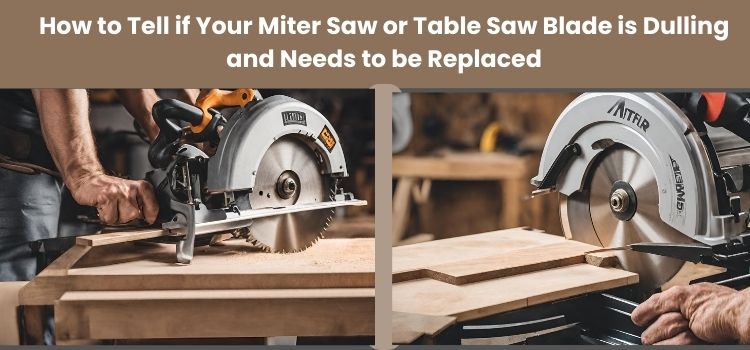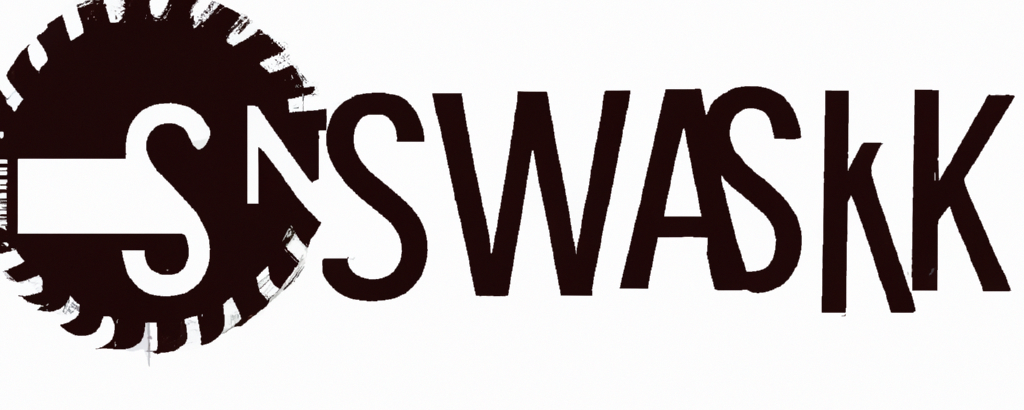How To Tell If Your Miter Saw Or Table Saw Blade Is Dulling And Needs To Be Replaced?

Sharp saw blades are essential for safe and efficient woodworking. A dull blade can increase the risk of accidents, such as kickbacks and injury from the spinning blade. It can also lead to poor-quality cuts, such as burning, tear-out, and unevenness.
Overview of the Top Ways to Tell If a Saw Blade Is Dulling
There are a number of ways to tell if a saw blade is dulling. Some of the most common signs include:
- Slower cutting speed
- Burning or scorch marks on the wood
- Uneven or rough cuts
- Increased noise or vibration
- Difficulty in pushing the wood through the blade
- Teeth of the blade appear dull or damaged
6 Signs of a Dull Saw Blade:
We have listed 6 signs of a Dull Saw Blade are as follows:
1. Slower Cutting Speed
If you notice that your saw blade is cutting through wood more slowly than usual, it may be a sign that the blade is dull.
A dull blade will have to work harder to cut through the wood, which can slow down the process and make it more difficult to control.
2. Burning or Scorch Marks on the Wood
A dull blade can cause the wood to burn or scorch as it is being cut. This is because the dull blade generates more friction, which can heat up the wood.
Burning or scorching marks on the wood are a clear sign that the blade needs to be sharpened or replaced.
3. Uneven or Rough Cuts
A dull blade can also produce uneven or rough cuts. This is because the dull blade is not able to cut through the wood cleanly. Uneven or rough cuts can be unsightly and may require additional work to fix.
4. Increased Noise or Vibration
A dull blade may also produce more noise or vibration than a sharp blade. This is because the dull blade is having to work harder to cut through the wood.
Increased noise or vibration can be a sign that the blade is dull or that something else is wrong with the saw.
5. Difficulty in Pushing the Wood Through the Blade
If you are having difficulty pushing the wood through the blade, it may be a sign that the blade is dull.
A dull blade will require more force to push the wood through, which can make it difficult to control the saw.
6. Teeth of the Blade Appear Dull or Damaged
If you inspect the blade and notice that the teeth are dull or damaged, it is a sign that the blade needs to be sharpened or replaced.
Dull or damaged teeth will not be able to cut through the wood as effectively, which can lead to all of the problems listed above.
4 Best Ways to Tell If a Saw Blade is Dulling
1. Visual Inspection
One of the best ways to tell if a saw blade is dulling is to visually inspect it. Look for the following signs:
1. Chips or cracks in the blade:
Chips or cracks in the blade can weaken it and make it more likely to break. If you see any chips or cracks in the blade, it should be replaced immediately.
2. Missing or damaged teeth:
Missing or damaged teeth will reduce the blade’s cutting performance and can lead to uneven cuts. If you see any missing or damaged teeth, the blade should be sharpened or replaced.
3. Signs of wear and tear:
Look for signs of wear and tear on the blade, such as rust, corrosion, or pitting. These signs can indicate that the blade is no longer sharp and needs to be replaced.
2. Sound Test
Another way to tell if a saw blade is dulling is to listen to the sound it makes when it is cutting. A dull blade will produce a louder, harsher sound than a sharp blade.
If you notice that your saw blade is making a different sound than it used to, it may be a sign that the blade is dull.
3. Cutting Test
If you are still unsure whether or not your saw blade is dull, you can perform a cutting test. Cut a piece of scrap wood with the blade and inspect the quality of the cut.
Look for burning or scorch marks, unevenness, and roughness. If the cut is not clean and smooth, it is a sign that the blade is dull.
4. Comparison Test
If you have a new or sharp saw blade, you can compare it to the blade that you are using to see if there is a difference in the quality of the cut. Cut a piece of wood with each blade and inspect the results.
If the new or sharp blade produces a cleaner and smoother cut, then the blade that you are using is likely dull.
Conclusion:
It is important to keep your saw blades sharp to ensure safe and efficient woodworking. Signs of a dull blade include slower cutting speed, burning or scorch marks on the wood, uneven or rough cuts, increased noise or vibration, difficulty in pushing the wood through the blade, and dull or damaged teeth.
You can tell if a saw blade is dull by visually inspecting it, listening to the sound it makes when cutting, performing a cutting test, or comparing it to a new or sharp blade.
If you notice any of these signs, it is time to sharpen or replace the blade. Remember to always follow safety guidelines when using saws to prevent accidents.
